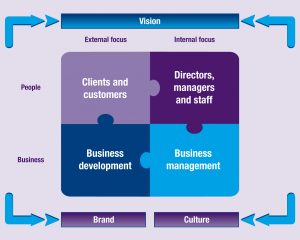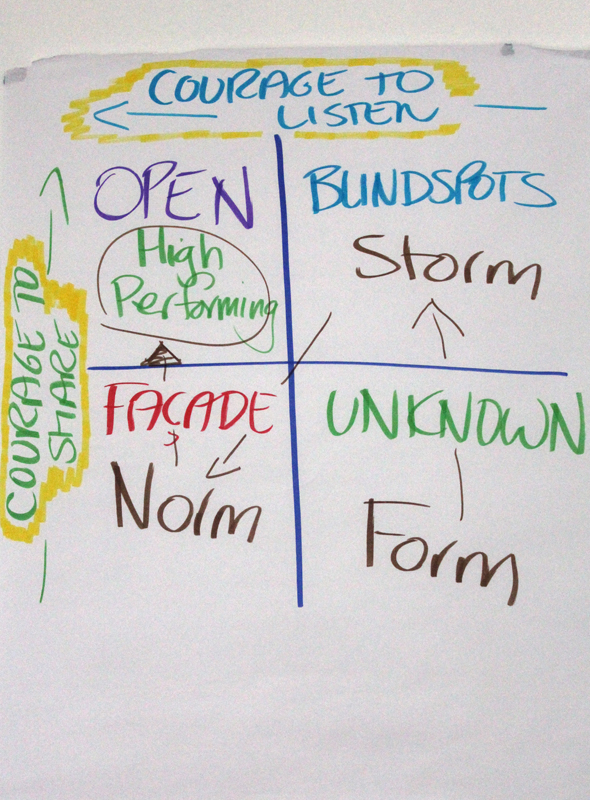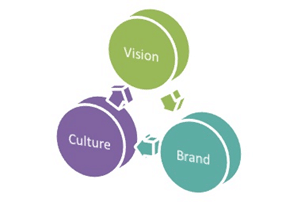“Culture eats strategy for breakfast” is thought to be a famous quote attributed to the late business management guru, Peter Drucker or some have claimed it was Jack Welch – either way it profoundly highlights the importance of leadership behaviours within an organisation (the topic for our next blog!) – as it is these behaviours that create and maintain a high performance culture or at worst damage it.
High performance cultures do not just ‘happen’ because the business has been operating for long enough or people have been working together for long enough. High performance cultures are the result of disciplined, committed and constructive leadership behaviours applied consistently throughout the whole business. At the very essence of this discipline is a deep sense of care for every person working within the business – as a human being who turns up each day to realise their full potential, feel like they belong and add value to the customers or clients of the business. If it is really that simple why do so many leaders find it difficult to build and maintain a high performance culture?
Whole of business culture is only classified as high performance if all business units and teams are considered to be high performing and as we referred to in an earlier blog on high performing teams these teams can only be high performing if the individuals within them work in a high performing way with one another and across teams.
So, what do you need to know about creating a high performance culture that can bring it to a practical reality in your business? We summarise it into FIVE critical questions and issues within this blog that require attention and consideration in the business, culminating with the final question of how do you go about creating a high performance culture:
- What does it take to have a high performance culture?
- Why create a high performance culture?
- Humans are at the very core of any business and they want to belong
- High performance culture will always BE your competitive edge
- How do you go about creating a high performance culture?
1. What does it take to have a high performance culture?
To create and maintain a high performance culture organisations need the discipline to:
- Hire the right people
- Retain these people so they realise their true potential
- Acquire, develop and consistently use the right systems
- Implement, support and embrace the right technology
- Create the right organisational structure to optimise the use of all resources
The combination of these five factors means you deliver the right performance for the business because
- people are inspired to do the right things
- technology is delivering the right results
- systems are enabling people to do the right things at the right time
- the organisational structure is presenting the right levels of personal accountability so people want to perform.
Step back and you notice it is the existing leaders who make the decisions about the structure, the systems, technology and ultimately the people employed and retained within the business. Which is why the final blog in our series will bring a focus on “high performance leadership”.
2. Why create a high performance culture?
Every business has a culture but not every business has a high performance culture – a culture that enables you to build, create and maintain financial, people and brand sustainability. In my book Inspiring Courageous Leaders I refer to this as the “sustainability conundrum” where business leaders face the resultant tension between:
- Financial sustainability: acceptable bottom line results and positive net tangible assets on the balance sheet
- People sustainability: strong retention and engagement of people who strive to create a high performing culture and give their best enthusiastically to the business
- Brand sustainability: a strong presence in the marketplace and strong commitment to live up to the brand promise through the touchpoints and experiences they create with external stakeholders, like customers, suppliers, potential employees.
Leaders decide which business activity deserves attention. Look at the borders of the diagram below and see the business activities are framed by the organisation’s:
- Vision: where it wants to go
- Brand: how it wants to be perceived in its marketplace
- Culture: the way people experience interacting with each other.
These activities are dissected into four ‘panes’ of activity, like those within a window and represent a type of business activity essential to long-term sustainability.

Managing the tension between these panes creates stress for everyone and it is the experiences created as people do this that have the potential to build, maintain or damage, the culture of the business.
Culture is built, maintained or damaged each time leaders and others in the business:
- have a conversation
- make a decision
- take action
- choose a behaviour
- ignite ideas within others.
Culture is about experiences, experiences provided by leaders, experiences you are allowed to create, and experiences you choose to engage in. Culture is a way of life within a business. Culture is informed by the leaders of a business every day by what, how and when they engage in experiences with people in the business. Most of these experiences are initiated and developed by a conversation or in many cases the lack of a conversation.
So, let’s now answer the question – why create a high performance culture?
Because it means the business consistently achieves its core purpose and long term, whole of business sustainability is assured when this core purpose is achieved – because the business is:
- attracting the right type of client/customer,
- generating the right level and right kind of revenues,
- producing the right level of bottom line performance,
- creating the right level of return to its shareholders,
- providing the right type of place for people to work, allowing people to feel they belong and allowing people to perform to their true potential,
- developing the right kind of brand in the market,
- partnering suppliers so as to bring out the best from them and
- adhering to socially and environmentally responsible behaviours.
3. Humans are at the very core of any business and they want to belong
Recall from our blog on building high performance teams that too many leaders focus on the ‘hard’ edge of leading – task orientation; and dismiss the ‘soft’ edge of leading – people orientation; as the warm and fuzzy stuff that is not essential. In all honesty though, it appears they simply find it too hard to engage in a real conversation where the significance of people is recognised. By recognising our “human condition” drives each of us to want to feel significant, to feel like we belong and are valued, we can start to feed this condition by engaging in real conversations as outlined in significant depth in the blog on building high performance teams.
This is the simple reality – most of us are not well enough evolved and transformed to feel significant without such encouragement and involvement. You want a high performance culture then start bringing more of your “human” side to interactions and conversations within the business.
4. High performance culture will always BE your competitive edge
Herb Kelleher — CEO of Southwest Airlines for 35 years during a time where the company saw its greatest value expansion in the S&P 500 between 1971 and 2001 — once said: “Given enough time and money, your competitors can duplicate almost everything you’ve got working for you. They can hire away some of your best people. They can reverse-engineer your processes. The only thing they can’t duplicate is your culture… Do you know the difference between strategy and culture? Well, when Napoleon was in Paris in a room with all his generals around a table, discussing how to attack Russia, that’s strategy. But what makes a million men march to Moscow, that is culture!”
Bill Aulet, senior lecturer at MIT Sloan School of Management took his students to visit the Eventbrite office in San Francisco to show them how “culture eats strategy for breakfast, technology for lunch, and products for dinner, and soon thereafter everything else too.” He explained this happens because company culture is the operationalizing of an organization’s values.
5. How do you go about creating a high performance culture?
“Have you ever subjected your body and spirit to a gruelling physical challenge such as climbing a mountain or running a marathon – one in which you aren’t sure you can actually complete the challenge, in which you feel fully extended? This kind of intense experience has many parallels to the [building of culture]. Like preparing for a marathon, the journey to [creating a high-performance culture] requires sustained discipline, hard work, courage and mental stamina.” from Business Leadership by Gretchcen M. Spreitzer and Robert E. Quinn.
In presentations to existing leaders interested in creating a high-performance culture, I have always emphasised the need for them to consider their preparation for a marathon and to bring:
- sustained discipline
- hard work
- courage
- mental stamina.
Each leader makes a personal commitment to this sometimes gruelling journey with consistent effort. It is not good enough to one day speak about its importance and adopt the right behaviours and the next day when you are under pressure resort to the same old behaviour that achieved immediate results for you. Read more about this in our next blog on high performance leadership. Because high performance culture is all about the leadership team being totally engaged and committed to choosing the behaviours that align with the values! Without this engagement and buy-in you are doomed which is why Jim Collins talks about making sure you have “the right people on the bus”.
So, let’s talk about how you can actually get started………
To get this process started try defining at least five common and necessary behaviours for each pane of business activity in alignment with organisational values. An example of the kind of behaviours you might choose are:
- Customers and clients
Develop trust through totally open and honest conversations - People working in the business
Show we care about each other as real people by showing concern for what is happening for people at work and in other parts of their lives. - Developing new opportunities for building or growing the business
Take time to really understand what potential customers are looking for by listening to what they want in a real conversation. - Managing the performance of the business
Do not look to blame when something goes wrong; look to initiate changes to ensure improved future performance.
Defining this “smorgasbord of behaviours” from which you want people to select is such a small part of creating a high-performance culture. The most demanding part is to only ever dine from this smorgasbord of behaviours no matter what situation people face, no matter how tired they are. There are no excuses and there is no possible way to justify a behavioural choice that is not from the smorgasbord.
This is incredibly challenging and requires all leaders to bring sustained discipline, hard work, courage and mental stamina.











Trackbacks/Pingbacks